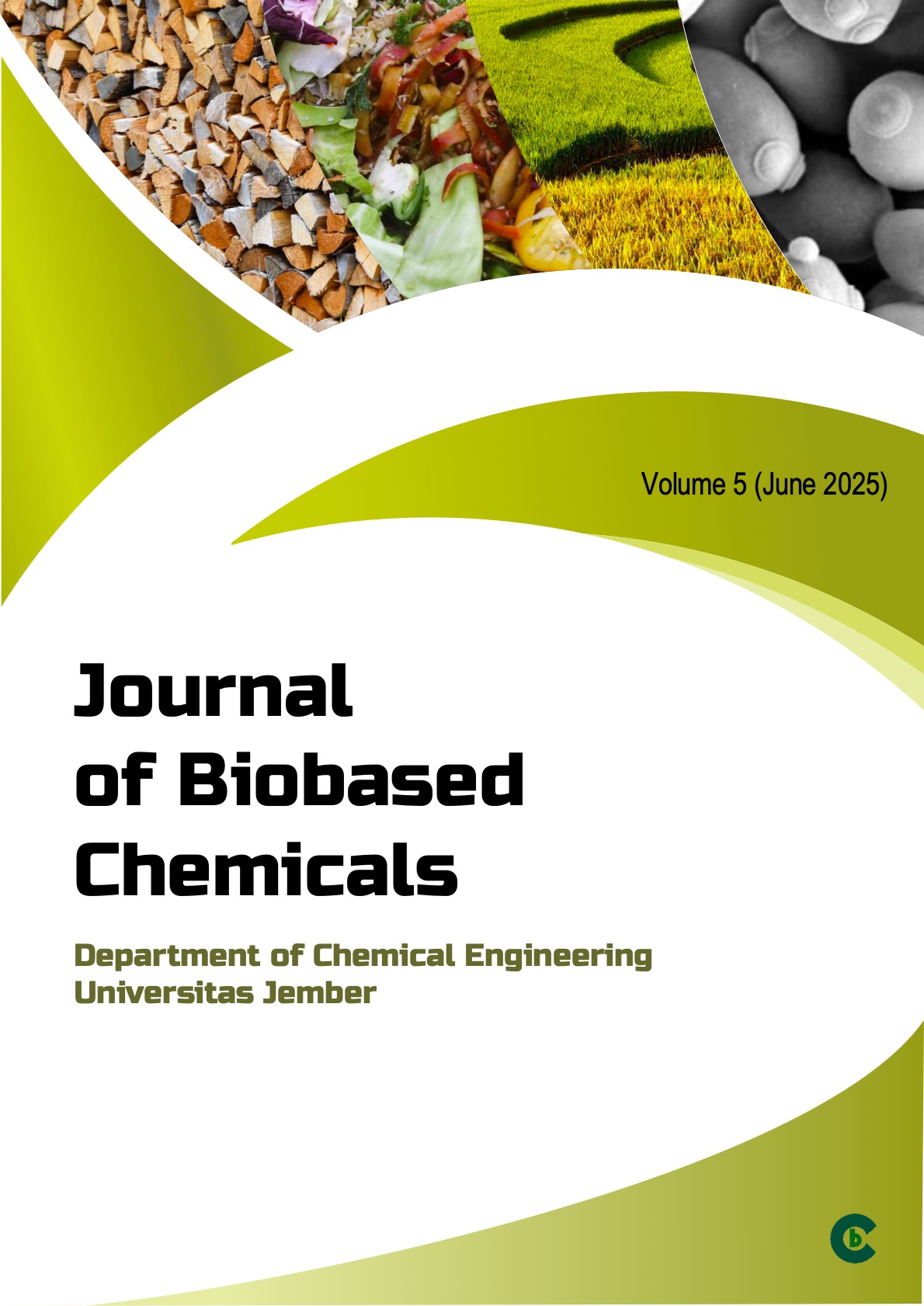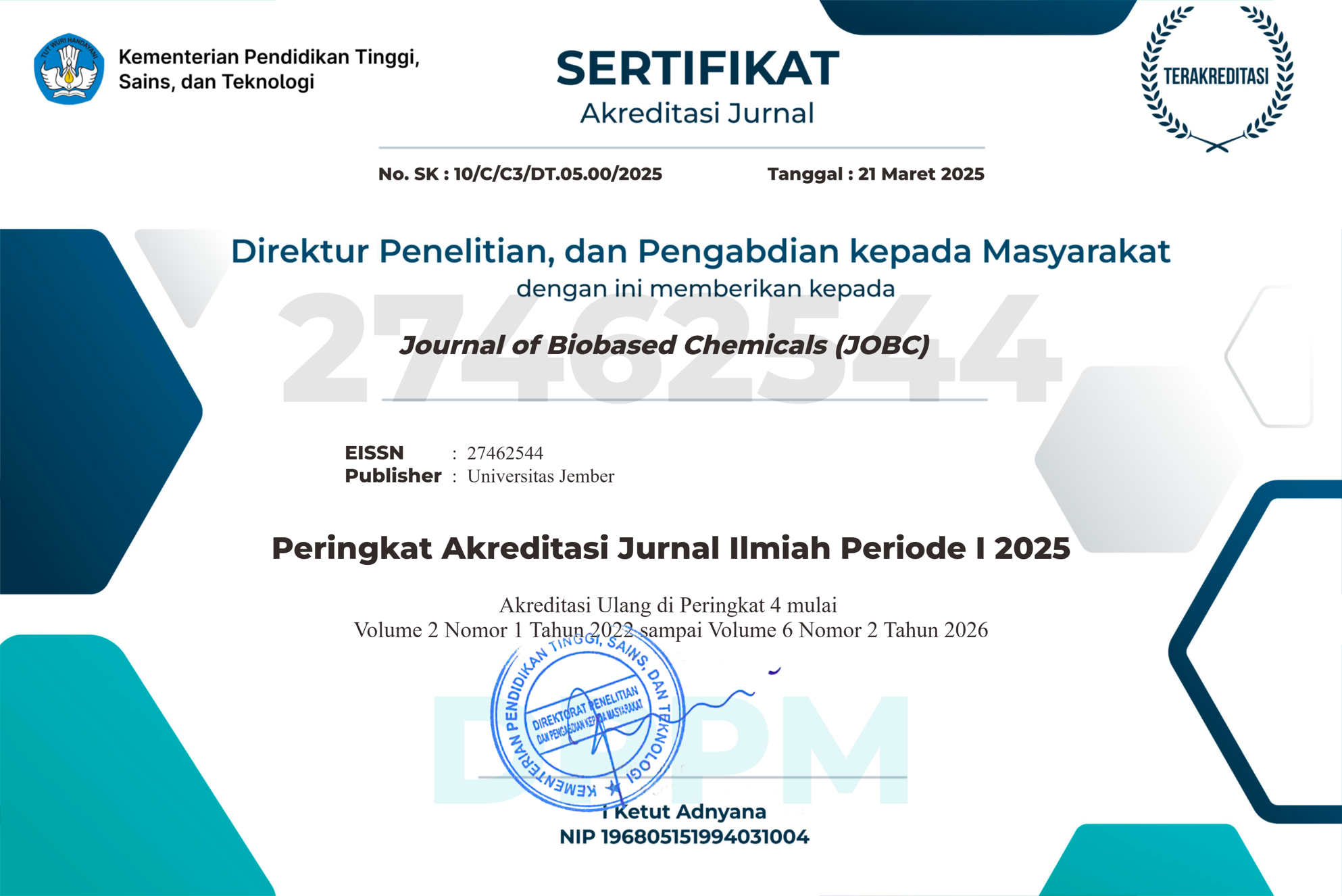Design and Optimization of a Modified CoLAR System for Biogas Agroindustry Development: A Case Study at PT. Juang Jaya Abdi Alam, South Lampung Regency
DOI:
https://doi.org/10.19184/jobc.v5i1.5604Keywords:
organic waste, biogas, modified CoLAR, agro-industryAbstract
One of the government's efforts to achieve national self-sufficiency in beef production is the development of cattle farming. However, while the expansion of cattle farming brings benefits, it also has negative impacts—particularly the improper management of cattle manure waste, which can lead to environmental pollution. This study aims to design and optimize a biogas reactor system based on a Modified Covered Lagoon Anaerobic Reactor (CoLAR) for the development of a biogas agroindustry, offering a solution for processing cattle manure waste through anaerobic biological processes on an industrial scale.
The case study was conducted at PT. Juang Jaya Abdi Alam, South Lampung Regency, which produces approximately 198,000 kg/day of organic waste from 8,500 to 9,500 cattle, most of which has not been utilized optimally. The methods used in this study include observation, expert interviews, surveys, and literature reviews. The reactor type was determined using the Exponential Comparison Method (MPE) based on technical, environmental, and financial aspects.
The designed system consists of a dilution unit, mixing unit, solid-liquid separator, and an anaerobic reactor equipped with an internal mixing system and an HDPE geomembrane cover. The results show that the Modified CoLAR system is the most suitable option, with a total reactor volume of 11,935 m³, biogas production of 1,663.2 m³/day, methane gas volume of 1,092.72 m³/day, and electricity generation potential of 5,135.784 kWh/day.








